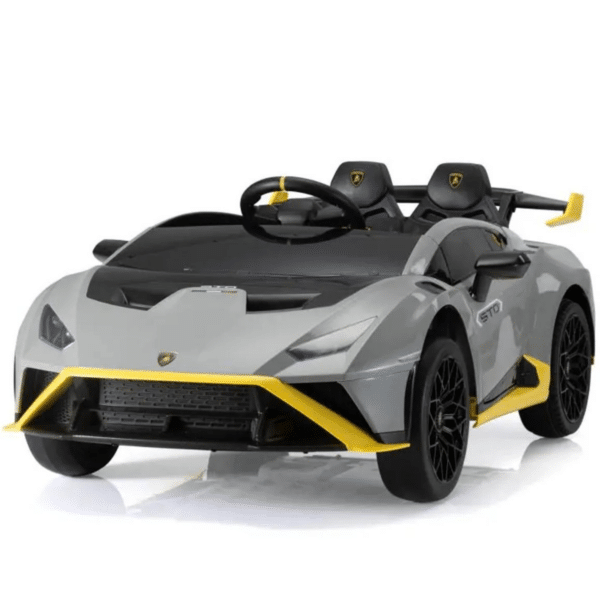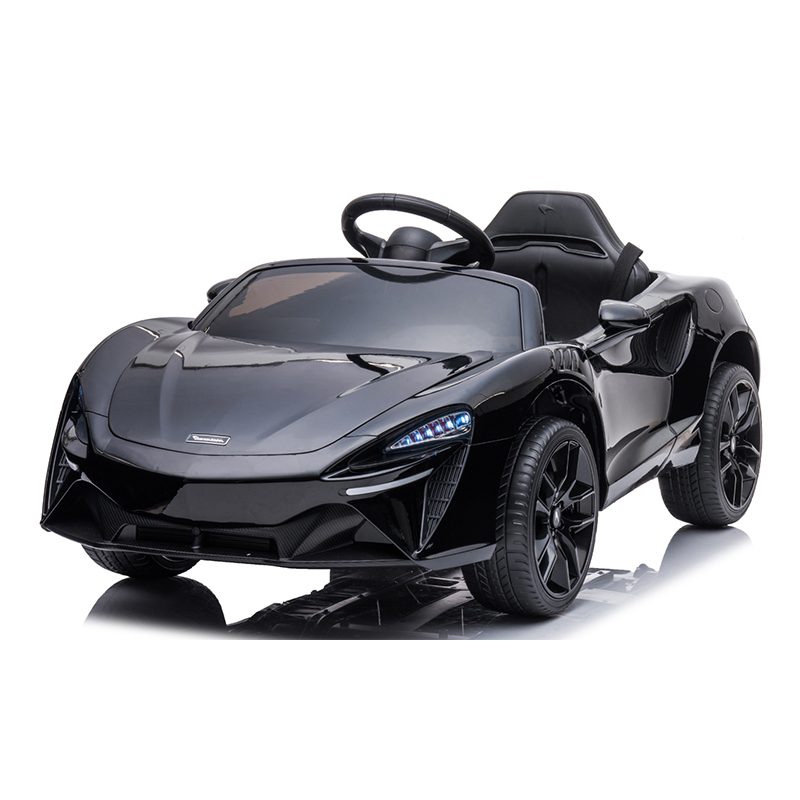Free Ideas To Choosing Ride On Toys
Wiki Article
What Do I Need Know About Battery Life And Charging Time Of An Electric Ride On Kids Car?
Understanding the battery life and charging time of an electric ride-on children' car is essential for making sure that your kids have uninterrupted playtime and maximum performance. Here's what you need to know to know: Type of Battery
The majority of electric vehicles are rechargeable and use either lithium-ion or lead-acid batteries. Lithium-ion batteries generally offer longer battery lifespan and quicker charging times compared to lead-acid batteries.
Battery Capacity
The capacity of the battery, expressed in ampere-hours (Ah) or watt-hours (Wh), determines the length of time that a ride-on vehicle can operate on a single charge. High capacity batteries allow for longer playtime, without needing recharge.
Run Time -
This is the amount of time that an electric ride-on will run for after a single charging. This is contingent on a range of factors such as the motor, the battery as well as the terrain and the weight or the rider.
Common run times for electric ride-on cars range from 30 minutes to 2 hours on just one charge. Some battery packs with higher capacity can offer longer run times.
Charge Time
Charging time is the amount of time taken to recharge the battery completely after it is depleted. The charging time can differ based on the battery's capacity, the specifications of the charger and the method of charging.
Charge times vary between 8 and 12 hours to complete charge for electric rides-on cars. Certain models, especially those that use lithium-ion batteries might have faster charging times.
To ensure the safety of your family and prolong battery life, it's important to charge the battery according to the manufacturer's instructions. The battery's performance and life span may be affected by charging too much or undercharging.
Charge Methods -
Electric ride-on vehicles typically have a charging station that plugs into a standard household outlet. Some models come with fast-charging features or smart chargers which monitors the state of the battery, and then adjusts charging rates accordingly.
To ensure that there is no damage to the electrical system or battery Make sure the charger and port are compatible with chargers supplied with your ride-on vehicle.
Additional Batteries
Some electric rides offer the possibility to purchase additional batteries or spare batteries to extend play time. Additional batteries let you replace batteries that are exhausted with fully charged batteries, which can reduce downtime.
If you are aware of the charging duration and battery life of an electric vehicle for children, your child can have endless fun and adventures. Continuously charging the battery and observing the correct charging procedures will help increase the battery's life and performance. Read the most popular Mercedes kids car for website tips including ride a toy, toy car toy car, ride of car, two seater childrens electric cars, electric rideons, electric ride on, cars pedal car, toy and car, race car toy car, remote control childrens electric cars and more. .

What Are The Assembly And Maintenance Requirements For Kids' Ride-On Vehicles?
For the best efficiency, safety, and long-term durability for optimal performance, safety and longevity, kids' rides-on cars need some assembly. Here are the common assembly and maintenance requirements for kid's ride-on cars - - Assembly -
The majority of ride-on cars are assembled in part upon arrival, and need some sort of assembly. Connecting the parts like wheels as well as steering wheels and seats, according to the manufacturer’s instructions, is the norm.
Follow the assembly guidelines carefully and ensure that each component is securely secured. Following the instructions finish the assembly with the equipment and tools provided.
Cleaning
To ensure that your car is in good condition and functioning effectively, it's essential to regularly clean it. Use a dampened soft cloth using mild soap and water to clean exterior surfaces.
Particular attention must be paid to the areas that are susceptible to build up, like tires, wheels and the undercarriage. Use a brush or toothbrush to clean hard-to-reach areas and eliminate stubborn grime.
Avoid using harsh chemicals, abrasive cleaners, or high-pressure water sprays, since they could cause damage to the electronic or paint components of the ride-on car.
Battery Care
The battery of the car that rides on it must be properly cared for to ensure that it operates effectively and lasts the longest possible time. Here are some guidelines on battery care.
Fully charge the battery before and after each use to extend the runtime.
Avoid overcharging batteries or leaving them connected to chargers for extended durations. This could damage batteries and shorten their life.
If not in use When not in use, keep the ride-on battery and car away from direct sunshine or extreme temperatures.
Periodically inspect the battery terminals to check for any damage or corrosion and clean them with a wire brush or terminal cleaner if necessary.
Replace the battery in the event that it is no longer holding a charge or shows indications of deterioration or damage.
Tire Maintenance -
Check the tires regularly for signs of damage, wear or air loss. Tires can be inflated to the recommended level with a bicycle or an air compressor.
The tread pattern must be examined for foreign objects, debris or other obstructions that can cause flats. Clear any obstructions and replace or repair damaged tires as needed.
Lubricate the wheel bearings as well as axles on a regular basis to reduce friction.
Periodic replacements or repairs
Despite the regular maintenance, certain ride-ons may need repairs or parts replacements from wear and tear.
Be alert for signs that your system is malfunctioning or is deteriorating, such as unusual sound or behavior, power loss, or other anomalies. For help with troubleshooting or repairs check the manual of the manufacturer.
Replace damaged and worn-out components to prevent further harm and to ensure that ride-on cars are safe and functional.
You can make sure your child's rideon car is in good working order by adhering to these assembly and maintenance instructions. Your child can look forward to endless hours of safe, fun and exciting time. Take a look at the best read more on Mercedes kids car for website tips including ride on digger, toy toy cars, toy a car, remote control childrens car, race car toy, childs electric ride on car, electric rideons, electric car ride, childrens electric cars, riding digger and more. .

What Should I Think About Before Buying An Electric Kid's Car? Pros And Pros?
You should consider several factors when choosing an electric kids car. Here are a few key factors to consider and details about prices as well as size as well as pros and cons.
Choose an electric kid's car depending on the age and size of your child is. Smaller and younger children might prefer smaller and lighter models, while larger and older children might require larger cars that have enough space to fit them comfortably.
Car Weight and Size -
Electric cars for kids come in various sizes, from tiny micro-sized models, to larger-scale replicas of real vehicles. The size and weight of your child's vehicle should be based on their age, size, and strength. Also, consider how much space is available for storage and play.
Price Variation
Electric cars for kids are available in a wide variety of prices based on aspects like size, features and brand. Prices can range from $50-200 for miniature replicas, and high-end licensed replicas range from $200 to $800.
What are the pros and cons?
Pros -
Electric cars for kids provide hours of fun and imagination for children. This allows them to feel the thrill in driving their own vehicle.
Motor Skill Development. An electric vehicle is an excellent way to help your child to develop coordination, spatial awareness, and fine-motor skills.
Electric cars are ideal for outdoor activities. They encourage physical exercise.
Realistic Features - A lot of electric children's cars have real-life features, such as working headlights, horns and MP3 player compatibility. This enhances the fun experience.
Cons
Cost - High-quality electric kids cars aren't cheap, especially licensed replicas of popular car brands.
Battery Life - Electric vehicles rely on rechargeable batteries for power, which might have a limited time of operation and require frequent recharge.
Safety Issues - Electric cars could pose safety hazards, including collisions, falls, and entrapment, if not operated with care and under adult supervision.
Assembly and Maintenance - Some electric cars require assembly upon arrival and maintenance on a regular basis which includes cleaning, battery care and occasional repairs or part replacements.
Accessories and Features
Take into consideration the accessories and features available on the electric cars for children, such as working headlights, horn sounds and working headlights. Also, take into consideration whether the car comes with a parental remote control or seat belts. Pick a model with the options and features that will best suit your child.
The best electric kid's car will depend, in the final analysis on your child's age as well as their interests and size and also your budget. Compare various models, look them over and consider the pros and cons before making a decision. Have a look at the recommended Mercedes kids car kidscars.co.uk news for blog advice including remote control childrens car, electric ride on, kids electric cars, childrens digger, electric rideons, two seater electric cars, ride a toy, toy ride, childs ride on car, ride a toy and more. .
